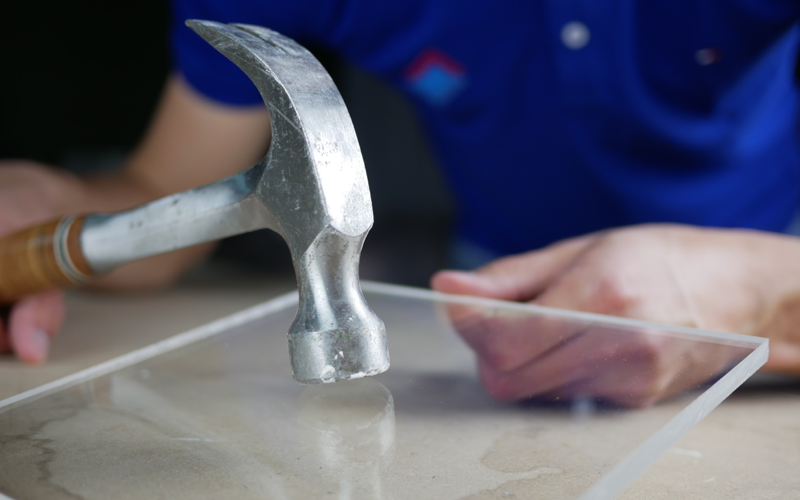As a rule of thumb, acrylic is about 30 times more impact-resistant than glass, but how does that work in practice? To be able to answer this question properly, we first have to look at the types of load that a material can undergo. We know three types of load in mechanical engineering: static, dynamic and jump load. If we look purely at the load that glazing (whether from glass, polycarbonate or acrylic) can undergo, then the dynamic and jump load are especially important. Dynamic loading is caused by wind force and by pressure differences on either side of the glazing. Just look at a window of an enclosed space when a door is suddenly opened: you will see the window move. And although the movement is small, this is a heavy load for glass.
Carrying capacity versus impact
Looking at the load-bearing capacity of acrylic, we can state that the weight required to break an acrylic sheet is about 30 times greater than a glass pane of the same thickness. Suppose a pane of glass 1 metre wide and 3 millimetres thick breaks at a weight of 1 kilo, then a three-millimetre thick acrylic sheet will break at a weight of 30 kilos. That is quite a difference. This is also the reason why acrylic is widely used in load-bearing and heavily loaded structures, such as showcases and aquariums.
The resistance to jump load is crucial. This is the case if the glazing gets a sudden blow or blow. We know that glass breaks quickly. Acrylic, however, is flexible and will deform (bend) due to the force. The energy of the impact is converted to distortion – something that glass can only do to a very limited extent. If acrylic is curved to the maximum, it will break, but it takes a lot of energy to reach that maximum bending ratio. A stone thrown against acrylic will bounce off with the same force, the same goes for a punch. If the maximum bending ratio is reached, the force to break the surface is still 30 times higher than with glass.

